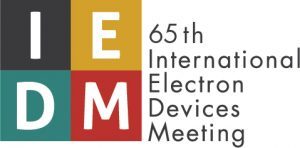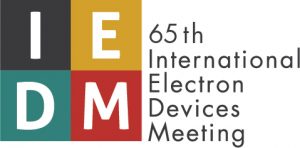 The International Electron Devices Meeting is a premier event to learn about the latest in semiconductor process technology. Held every year in early December is San Francisco this years conference will be held from Decembers 7th through December 11th. You can learn more about the conference at their web site here.
The International Electron Devices Meeting is a premier event to learn about the latest in semiconductor process technology. Held every year in early December is San Francisco this years conference will be held from Decembers 7th through December 11th. You can learn more about the conference at their web site here.
This is a must attend conference for me every year.
The following are a few of the announced papers I am particularly excited about:
(1) TSMC to Unveil a Leading-Edge 5nm CMOS Technology Platform: TSMC researchers will describe a 5nm CMOS process optimized for both mobile and high-performance computing. It offers nearly twice the logic density (1.84x) and a 15% speed gain or 30% power reduction over the company’s 7nm process. It incorporates extensive use of EUV lithography to replace immersion lithography at key points in the manufacturing process. As a result, the total mask count is reduced vs. the 7nm technology. TSMC’s 5nm platform also features high channelmobility FinFETs and high-density SRAM cells. The SRAM can be optimized for low-power or high-performance applications, and the researchers say the high-density version (0.021µm2) is the highest-density SRAM ever reported. In a test circuit, a PAM4 transmitter (used in highspeed data communications) built with the 5nm CMOS process demonstrated speeds of 130 Gb/s with 0.96pJ/bit energy efficiency. The researchers say high-volume production is targeted for 1H20. (Paper #36.7, “5nm CMOS Production Technology Platform Featuring Full-Fledged EUV and HighMobility Channel FinFETs with Densest 0.021µm2 SRAM Cells for Mobile SoC and High-Performance Computing Applications,” G. Yeap et al., TSMC)
(2) Intel Says Heterogeneous 3D Integration Can Drive Scaling: CMOS technology requires both NMOS and PMOS devices, but the performance of PMOS lags NMOS, a mismatch which must be addressed in order to wring every last bit of performance and energy efficiency from future chips. One way to do that is to build PMOS devices with higher-mobility channels than their NMOS counterparts, but because these are built from materials other than silicon (Si) which require different processing, it is challenging to build one type without damaging the other. Intel researchers got around this with a 3D sequential stacking architecture. They first built Si FinFETNMOS transistors on a silicon wafer. On a separate Si wafer they fabricated a single-crystalline Ge film for use as a buffer layer. They flipped the second wafer, bonded it to the first, annealed them both to produce a void-free interface, cleaved the second wafer away except for the Ge layer, and then built gate-all-around (GAA) Ge-channel PMOS devices on top of it. There was no performance degradation in the underlying NMOS devices, and in an inverter test circuit the PMOS devices demonstrated the best Ion-Ioff performance ever reported for Ge-channel PMOS transistors (Ion=497 µA/µm and Ioff=8nA/µm at 0.5V). The researchers say these results show that heterogeneous 3D integration is promising for CMOS logic in highly scaled technology nodes. (Paper #29.7, “300mm Heterogeneous 3D Integration of Record Performance Layer Transfer Germanium PMOS with Silicon NMOS for Low-Power, High-Performance Logic Applications,” W. Rachmady et al., Intel.)
(3) Versatile 22nm STT-MRAM Technology: Many electronics applications require fast nonvolatile memory (NVM), but embedded flash, the current dominant technology, is becoming too complex and expensive to scale much beyond 28nm. A type of embedded NVM known as STT-MRAM has received a great deal of attention. STT-MRAM uses magnetic tunnel junctions (MTJs) to store data in magnetic fields rather than as electric charge, but this ability decreases as temperature increases. That makes STT-MRAM both challenging to build – it is fabricated in a chip’s interconnect and must survive high-temperature solder reflow – and also to use in applications such as automotive, where thermal specifications are demanding and the ability to resist outside magnetic fields is critical. TSMC will describe a versatile 22nm STT-MRAM technology that operates over a temperature range of -40ºC to 150ºC and retains data through six solder reflow cycles. It demonstrated a 10-year magnetic field immunity of >1100 Oe at 25ºC at a 1ppm error rate, and <1ppm when in a shield-in-package configuration. The researchers say that by trading off some of the reflow capability and using smaller MTJs, even higher performance can be achieved (e.g., 6ns read times/30ns write times), making them appealing for artificial intelligence inference engines. (Paper #2.7, “22nm STT-MRAM for Reflow and Automotive Uses with High Yield, Reliability and Magnetic Immunity and with Performance and Shielding Options,” W. Gallagher et al., TSMC)
About IEDM
With a history stretching back more than 60 years, the IEEE International Electron Devices Meeting (IEDM) is the world’s pre-eminent forum for reporting technological breakthroughs in the areas of semiconductor and electronic device technology, design, manufacturing, physics, and modeling. IEDM is the flagship conference for nanometer-scale CMOS transistor technology, advanced memory, displays, sensors, MEMS devices, novel quantum and nano-scale devices and phenomenology, optoelectronics, devices for power and energy harvesting, high-speed devices, as well as process technology and device modeling and simulation. The conference scope not only encompasses devices in silicon, compound and organic semiconductors, but also in emerging material systems. IEDM is truly an international conference, with strong representation from speakers from around the globe.







Speculative Execution: Rethinking the Approach to CPU Scheduling